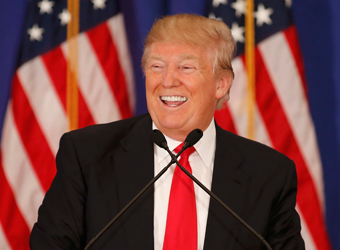The North American Free Trade Agreement (NAFTA) may not include any Asian nations, but the trade-dependent region will be closely watching how the Trump administration handles talks, analysts said.
U.S. President Donald Trump since his campaign has railed against many previously negotiated trade deals. After axing the Trans-Pacific Partnership that would have linked major Asian economies with the U.S., Trump has now set his sights on NAFTA.
The trilateral trade agreement between Canada , the U.S. and Mexico is coming under the knife as renegotiation began this week between the countries.
Although those talks may seem a world away, they have major implications for countries like South Korea, according to Deborah Elms, executive director of the Asian Trade Centre.
The Trump administration has also said it wants to renegotiate the free-trade agreement with South Korea, which was signed in 2007. New talks were set to begin next week on amending the deal, Reuters reported, and Seoul will likely be looking to NAFTA for clues to its future.
“Anyone else thinking about doing a bilateral deal with the U.S. is watching to see what a bilateral with this administration looks like,” Elms said.
At a joint press conference in Washington, DC, on Wednesday with the three NAFTA countries, U.S. Trade Representative Robert Lighthizer issued tough rhetoric.
“I want to be clear, [Trump] is not interested in a mere tweaking of a few provisions and a couple of updated chapters,” Lighthizer said. “NAFTA has fundamentally failed many, many Americans and needs major improvement.”
The tough rhetoric on NAFTA could have another impact on Asia: It could turn Canada’s head toward the Pacific, Stewart Beck, CEO of the Asia Pacific Foundation of Canada, told CNBC’s “Capital Connection” on Wednesday.
“We’ve always had long-term relationships in Asia, but the reality is, our economic focus has always been toward the U.S.,” Beck said. “The fact that we’re beginning to look at Asia in a much more constructive way from a business perspective is really good news.”
Beck noted that Canada has been interested in resurrecting the TPP, particularly as it would open markets in Japan and Southeast Asia to Canadian products. Although Trump withdrew from the TPP deal shortly after taking office, the remaining 11 member nations have been working to resurrect it without him.
The tougher trade rhetoric coming from the U.S. may make it easier for Canada to pivot toward Asia, Beck said.
“The challenge has been, historically, certainly over the last five years, a certain reluctance in terms of the Canadian population to engage in a free-trade agreement with China,” he said.
But since Trump’s inauguration, which heralded not just the NAFTA renegotiation, but also a heightened spat over softwood lumber, “Canadians are now beginning to realize that we do have to diversify our trade relationships and China is the second-largest economy and that’s a very important economy for Canada,” he said.
Countries in Asia, with economies that are dwarfed by the size of the U.S., may also be watching for ways to negotiate with the Trump adminsitration.
Andrei Sulzenko, executive fellow at the School of Public Policy at the University of Calgary, noted that while Canada’s economy was only about a tenth the size of the U.S. economy, it wasn’t without heft in negotiations.
“We are the main export market for more than 30 American states,” he told CNBC’s “Street Signs” on Thursday. “We actually matter a lot to the U.S.”
Additionally, Elms noted that Canada had already drawn some hard, red lines on how the NAFTA talks would proceed.
Source: CNBC


